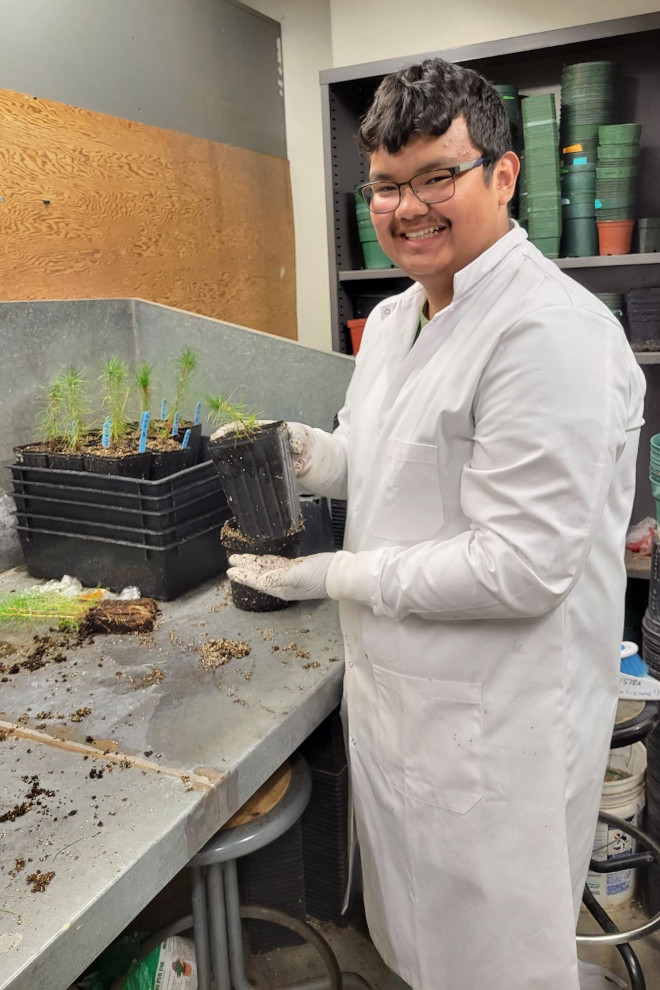I-STEAM intern explores trees’ natural defences against mountain pine beetles
Caitlin Crawshaw - 23 August 2024
Long before this summer’s devastating fire, the forests of Jasper National Park were streaked with red — a tell-tale sign of dying pine trees. The culprit: the ravenous mountain pine beetle, which has long afflicted the Rocky Mountains.
Fortunately, trees are not defenceless. The lodgepole pine tree, for instance, mounts a chemical defence via toxic sap that can stop insects in their tracks.
“It’s like a war, pretty much,” says Bo Ragot, a student intern in the lab of Dr. Janice Cooke, a University of Alberta professor who studies how trees respond to mountain pine beetles.
Ragot is exploring his interest in environmental science through the I-STEAM Pathways program, which helps First Nations, Métis and Inuit students explore career possibilities with summer internships at the U of A. Ragot, a biology undergraduate student at the University of Manitoba, came to Alberta at the start of the summer to broaden his biology education and gain research experience. “The field of biology is so huge, as is the range of careers I could pursue,” he says.
For most of his academic career, Ragot has focused on health sciences as he is considering a career in medicine. However, he has become increasingly curious about other areas of biology, especially environmental science, after contributing to a soil science research project in Manitoba last summer.
Ragot was eager to apply for I-STEAM, knowing it would offer him an opportunity to continue his exploration. He was thrilled to be placed with Cooke, a forest biologist and director of the TRIA Mountain Pine Beetle NSERC Strategic Network. Her lab examines how forest trees respond to environmental cues to identify underlying molecular and cellular processes.
This summer, he has been helping with genomics research concerning genes involved in the lodgepole pine’s production of toxic sap. “I’ve been acquiring new skills and knowledge,” he says, adding that he recently helped successfully clone one of the team’s genes of interest using bacteria. Ragot explains that the research is ultimately aimed at improving the tree’s resistance to mountain pine beetles.
As much as Ragot has enjoyed his research experience, he doesn’t see himself working in a lab, ultimately. Instead, he’d like to apply his scientific knowledge and analytical skills to solving important environmental issues facing Indigenous communities, such as water safety problems.
Ragot belongs to the Big River First Nation in Saskatchewan, which has been under a boil-water advisory for years, in addition to other environmental challenges. “I’d like to bring this kind of problem-solving to my band in future.”
